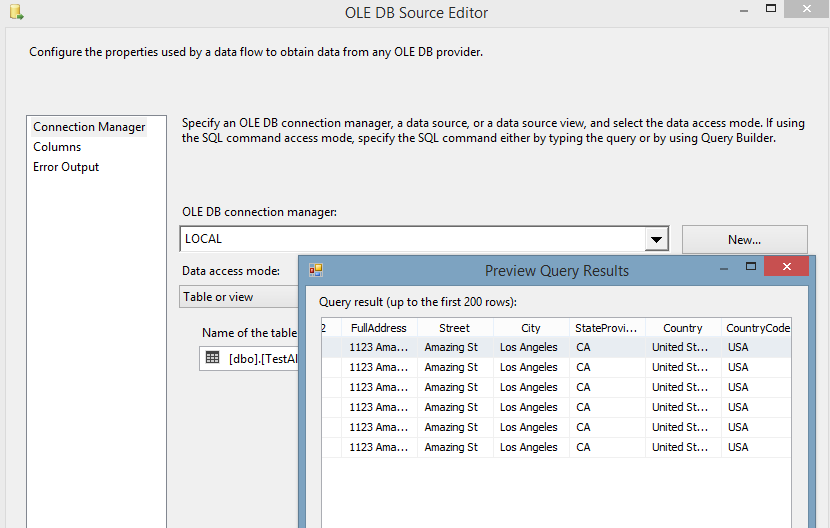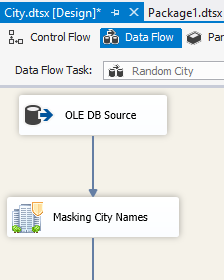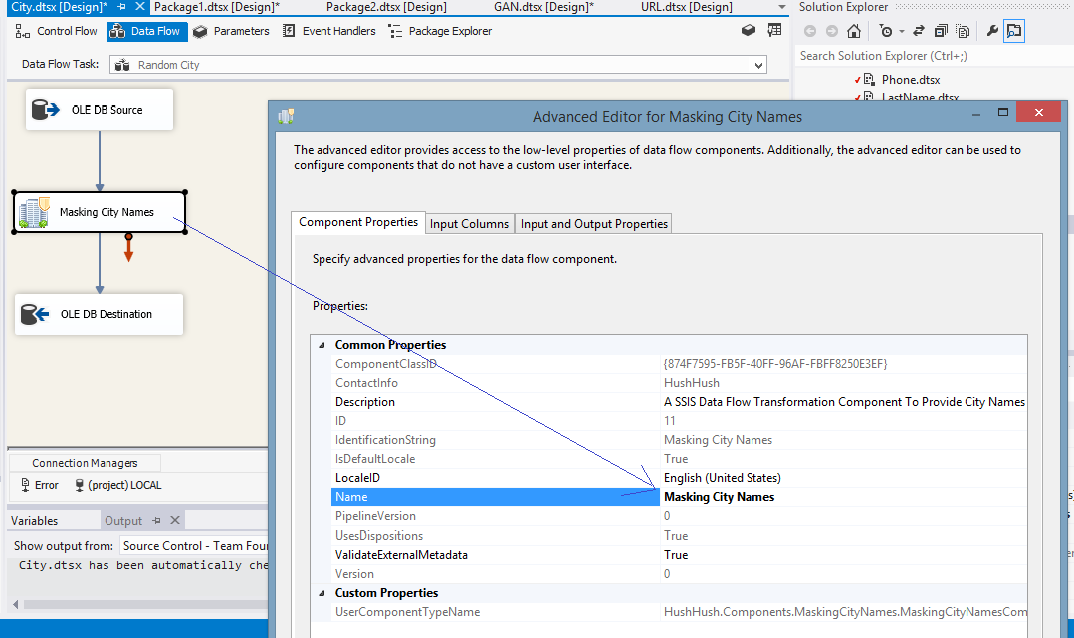e
q
u
e
s
t
a
d
e
m
o < back
Data Masking Components: City Names
{TOC}
"City Name Data Masking Component"
API Reference, CLR Reference (links)
Usage Instructions:
Purpose
The purpose of the component is to mask values of City names with other realistic yet false values of the city names. Component contains about 700 possible values. City names are part of 18 data elements per HIPAA Safe Harbor.
Algorithm
Variation of Random Substitution
Description
 City Names data masking component takes city name in one of the characters data types, both ASCII and unicode (char, nchar, varchar, nvarchar, text, ntext) as an input and produces a city name in the same format as an output. The output of the city name data masking component is random. It does not guarantee uniqueness of the names that are produced as a result of the application of the algorithm.
City Names data masking component takes city name in one of the characters data types, both ASCII and unicode (char, nchar, varchar, nvarchar, text, ntext) as an input and produces a city name in the same format as an output. The output of the city name data masking component is random. It does not guarantee uniqueness of the names that are produced as a result of the application of the algorithm.
|
API Reference, CLR Reference (links)
Usage Instructions:
| 1. Configure a source that contains the column with the element of city name. A source could be connected to any database, including but not limited to SQL Server , Oracle, Sybase, mySQL, as well as a file. |
 
|
| 2. Drag and Drop "Masking City Name" data masking component, connect the source and the "Masking City Name" data masking component with the data flow path: |
 |
| 3. Now, the data flow path (the blue arrow) passes proper meta-data to the "Masking City Name" data masking component. If you click on the data flow path, you will see: |
 |
| 4. Now that the metadata for the "Masking City Name" component exists, and values are passed into the data masking component, please open the component editor: |
 |
| 5. In the second tab, there are input columns. Please check-mark only one column, the one that you will be masking with City Name algorithm: |
|
| 6. This will create an extra column with the prefix “Masked_”. |
|
| 7. Create a connection manager for the destination and configure source component for the destination. In the connection manager, in the tab “Mappings”, specify that you want newly created Field_Masked to be a field replacing the original value. For that, just click on the available input columns, choose the masked value, and map to the “Available Destination Columns” |
|
| 8. Now, all the configurations are complete for the valid values. You can run the package with the Generic AlphaNumeric Dynamic Data Masking component, and see the results of data masking: |
|
Error Handling
| 9. If, however, there are invalid values in the package's source, one would need to configure error handling. Invalid values are those that are not conforming to the rules of the entity. To handle invalid values, each data masking component has error handling precedence constraint. One needs to create error destination connection and connect red arrow (error handling constraint) with this destination. As the connection is made, one needs to configure the state of failure: “Fail”,”Ignore” or “Redirect”. |
|
| 10. It is recommended that one re-directs the output into the error destination, so that later one be able to analyze and process data for quality purposes. The Generic Alpha Numeric components errors are the only ones not recommended for further processing as it is truly hard to break their format. |
|
| 11. It is our suggestion that with Generic Alpha Numeric component one should not process erroneous data without further analysis at all. |
|
